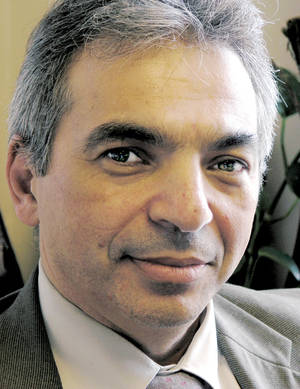Affect Intensity Measure subscale scores can be used to help understand the complexity of emotions experienced by patients with bipolar disorder I and II, a study of 310 outpatients suggests.
Furthermore, four factors – positive affectivity, "unpeacefulness" (lack of serenity), negative reactivity, and negative intensity – allow clinicians to "explore more subtle components characterizing various aspects of emotional response" among patients with both types of bipolar, Flavie Mathieu, Ph.D., Dr. Bruno Etain, and their colleagues reported (J. Affect. Disord. 2014;157:8-13).
The Affect Intensity Measure (AIM) is a 40-item questionnaire designed to measure the extent to which patients experience emotion.
For the study, Dr. Mathieu, Dr. Etain, and their colleagues recruited patients at four university-affiliated psychiatric departments in France. All of the patients included in the study were aged 18 years or older (mean age, 42.4 years). In all, 233 of the patients met the DSM-IV criteria for bipolar disorder I, 65 met the criteria for bipolar II, and 12 for bipolar not otherwise specified, wrote Dr. Mathieu of Université Paris Diderot, Dr. Etain of Hôpital Albert Chenevier, Créteil, France, and their colleagues.
The team developed a French translation of the AIM and got it "backtranslated" by an independent translator. The patients were asked to describe their affect during euthymic periods rather than during either manic or depressive episodes. Euthymic states were confirmed based on the patients’ scores on the Montgomery-Åsberg Depression Rating Scale (MADRS) and the Mania Rating Scale.
No statistically significant association was found between the patients’ total AIM scores and the clinical characteristics of bipolar disorder. However, when the investigators looked at the four factors, they found significant associations between the AIM subscale scores and bipolar disorder characteristics. For example, the unpeacefulness subscale score was associated with the onset of psychotic symptoms (P = .0006) and substance misuse (P = .008). The negative intensity subscale score was associated with social phobia (P = .0005).
The investigators cited several limitations. For example, they found no correlation between the patients’ total AIM scores and MADRS scores, which suggests that "AIM total score is not necessarily influenced by depression."
Despite these limitations, the investigators said their findings "suggest that assessment of affective intensity using this self-report scale may be useful in clinical settings but also as a means of further characterizing [bipolar disorder] phenotypes in future research."
The research was funded by INSERM, Assistance Publique des Hôpitaux de Paris, Agence National pour la Recherche, and the Fondation FondaMental. The authors reported no financial conflicts.



